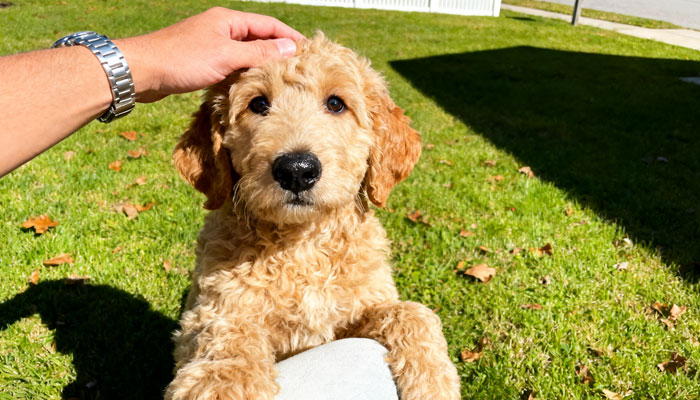Goldendoodle Breed Guide

Within canine pedigrees, the emergence of hybrid breeds often aligns closely with specific human needs. The Goldendoodle exemplifies such a breed—born for practical purposes and ultimately finding its way into countless homes. Bred from the cross of Golden Retrievers and Poodles, its history is shorter than that of traditional purebreds. Yet, by combining the strengths of both parent breeds, it has evolved over decades from an experimental breeding project into a widely beloved companion. Its development trajectory clearly illustrates the deepening relationship between humans and dogs.
I. The Origins of the Goldendoodle
The breeding of Goldendoodles was not accidental but stemmed from the human need for “hypoallergenic working dogs.” As early as the 1960s, scattered breeders attempted to cross Golden Retrievers with Poodles, but systematic and purposeful breeding began in the 1990s. At that time, a Canadian breeder seeking guide dogs suitable for allergy sufferers focused on two distinct breeds: the Golden Retriever, renowned for its gentle temperament, high obedience, and affinity for humans, making it an excellent working dog candidate; and the Poodle, whose curly coat minimizes shedding and effectively reduces allergen spread.
Initial breeding focused on “working performance.” Breeders rigorously selected parent dogs to ensure offspring inherited the Golden Retriever’s stable temperament and the Poodle’s low-shedding coat, while reinforcing obedience and endurance through multiple generations of selective breeding. Early Goldendoodles primarily served as guide dogs, hearing dogs, and other assistance roles. Their adaptability in service settings proved the viability of this hybrid combination and laid the foundation for subsequent development.
II. Early Status of the Goldendoodle
By the late 1990s, shifting attitudes toward dog ownership saw demand evolve from “working tools” to “family companions,” perfectly aligning with the Goldendoodle’s strengths. It inherited the Golden Retriever’s patience and tolerance toward children, maintaining a gentle demeanor even when interacting with energetic toddlers. while the Poodle’s curly coat gene minimizes shedding, significantly reducing concerns for allergy sufferers.
During this phase, breeders shifted focus from “working performance” to “family adaptability.” They implemented genetic health screening protocols, targeting common issues like hip dysplasia in Golden Retrievers and eye diseases in Poodles through selective breeding to reduce hereditary risks. Their healthy, gentle, and hypoallergenic traits quickly built the Goldendoodle’s reputation as a family companion dog, expanding its role from niche service dog applications to a mainstream choice for households.
III. From Niche to Widespread Recognition
Although the Goldendoodle remains unrecognized by major purebred kennel clubs, several international mixed-breed organizations have established breeding standards to promote the breed’s standardized development. Based on parent size differences, Goldendoodles are categorized into three types: Standard (over 50 cm shoulder height), Miniature (35-50 cm), and Toy (under 35 cm). Organizations have also defined basic criteria for coat texture (ranging from loose waves to tight curls) and coat color (cream, gold, chocolate, etc.), providing breeders with reference points.
Due to its stable temperament and strong sensitivity to human emotions, the Goldendoodle is widely trained as a therapy dog. It appears in hospitals, nursing homes, and special education institutions, alleviating anxiety and loneliness through companionship. This emphasis on “companion value” elevates the Goldendoodle beyond its “hypoallergenic dog” label, establishing it as a breed that embodies both practical utility and emotional significance.
admin
-
Sale!

Washable Pet Cooling Pad for Cats and Dogs
$10.99Original price was: $10.99.$9.99Current price is: $9.99. This product has multiple variants. The options may be chosen on the product page -
Sale!

Washable Cat Window Hammock Cooling Bed
$23.99Original price was: $23.99.$22.99Current price is: $22.99. -
Sale!

Tropical Amphibian Rainforest Tank, Lizard Cage
$38.99Original price was: $38.99.$36.99Current price is: $36.99. -
Sale!

Silent 4-in-1 Waterproof Charging Dog Hair Trimmer
$49.88Original price was: $49.88.$47.99Current price is: $47.99.